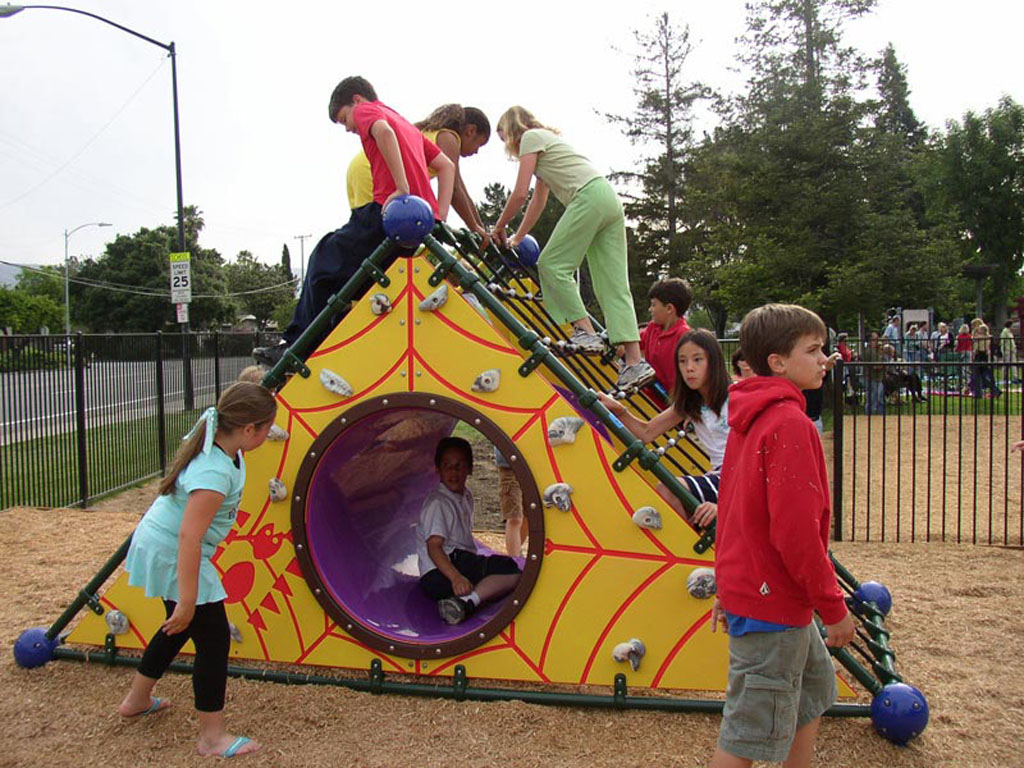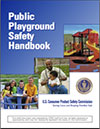



Important CPSC Safety Highlights
Excerpts from U.S Consumer Product Safety Commission
Handbook for Playground Safety (April 2008)
Important tips when considering loose-fill materials:
- Loose-fill materials will compress at least 25% over time due to use and weathering. This must be considered when planning the playground. For example, if the playground will require 9 inches of wood chips, then the initial fill level should be 12 inches.
- Loose-fill surfacing requires frequent maintenance to ensure surfacing levels never drop below the minimum depth. Areas under swings and at slide exits are more susceptible to displacement; special attention must be paid to maintenance in these areas. Additionally, wear mats can be installed in these areas to reduce displacement.
- The perimeter of the playground should provide a method of containing the loose-fill materials.
- Consider marking equipment supports with a minimum fill level to aid in maintaining the original depth of material.
- Good drainage is essential to maintaining loose-fill surfacing. Standing water with surfacing material reduces effectiveness and leads to material compaction and decomposition.
- Critical height may be reduced during winter in areas where the ground freezes.
- Never use less than 9 inches of loose-fill material. Shallower depths are too easily displaced and compacted.
4.3 Maintaining Loose-Fill Surfacing
Loose-fill surfacing materials require special maintenance. High-use public playgrounds, such as child care centers and schools, should be checked frequently to ensure surfacing has not displaced significantly, particularly in areas of the playground most subject to displacement (e.g., under swings and slide exits). This can be facilitated by marking ideal surfacing depths on equipment posts. Displaced loose-fill surfacing should be raked back into proper place so that a constant depth is maintained throughout the playground. Impact attenuating mats placed in high traffic areas, such as under swings and at slide exits, can significantly reduce
5.3.6.4 Chute exit region
All slides should have an exit region to help children maintain their balance and facilitate a smooth transition from sitting to standing when exiting. The chute exit region should:
- Be between 0 and -4° as measured from a plane parallel to the ground.
- Have edges that are rounded or curved to prevent lacerations or other injuries that could result from impact with a sharp or straight edge.
• For toddlers the chute exit region should:
- Be between 7 and 10 inches long if any portion of the chute exceeds a 24° slope.
- Be no more than 6 inches above the protective surfacing.
- Have a transition from the sliding portion to the exit region with a radius of curvature of at least 18 inches.
• For preschool- and school-age the chute exit region should:
- Be at least 11 inches long.
- Be no more than 11 inches above the protective surfacing if the slide is no greater than 4 feet high.
- Be at least 7 inches but not more than 15 inches above the protective surfacing if the slide is over 4 feet high.
For a full copy of the Handbook for Playground Safety, go to U.S Consumer Product Safety Commission web site link below:
